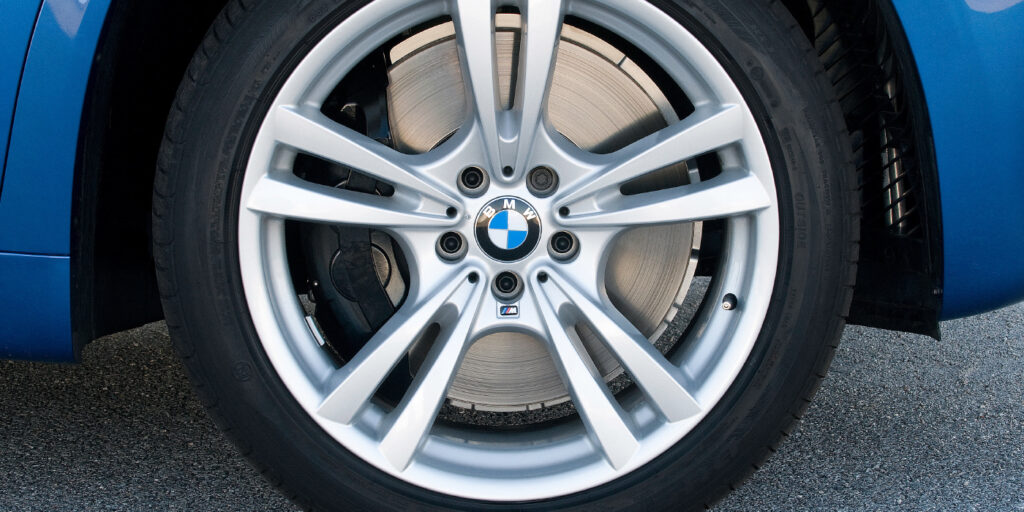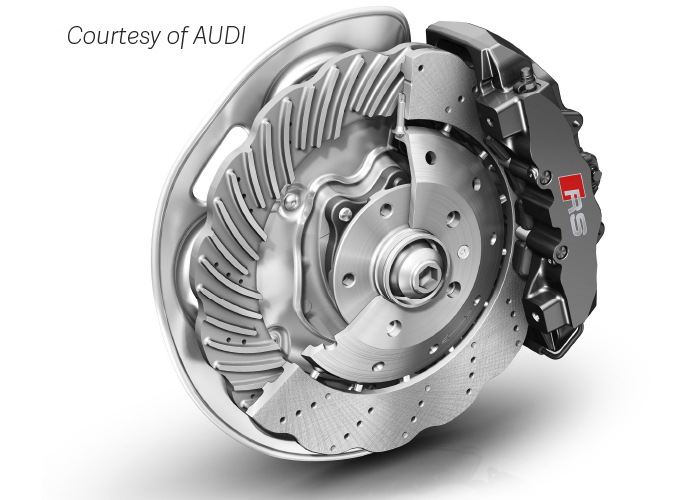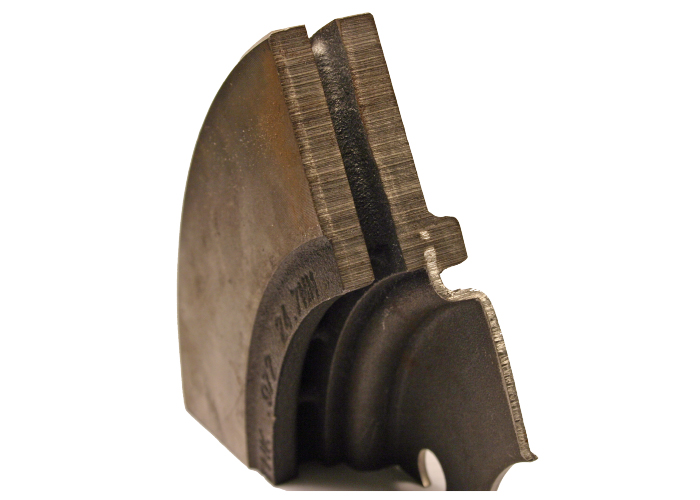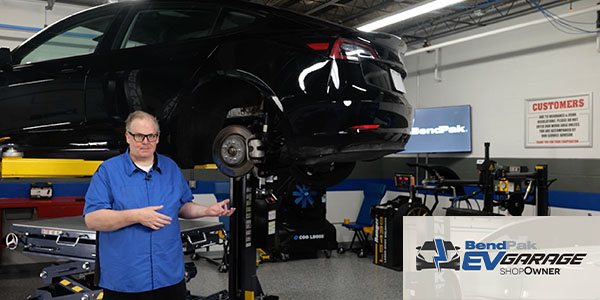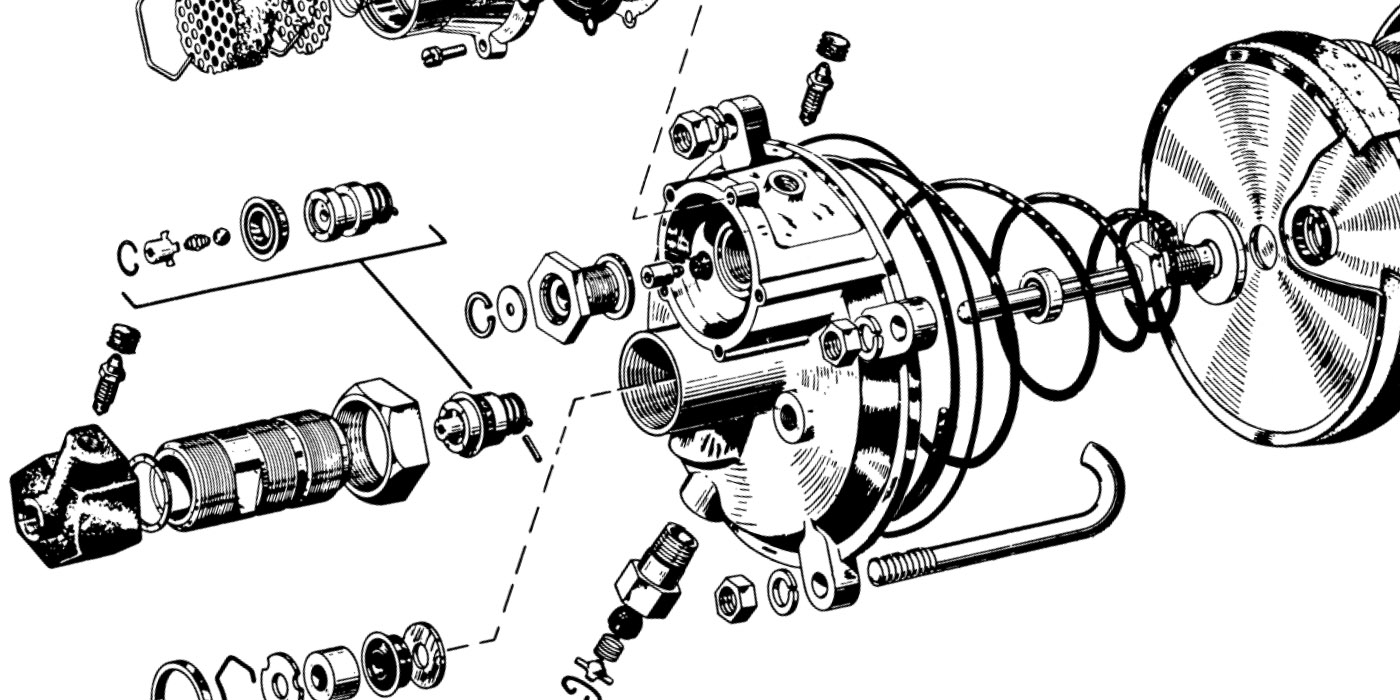When you hear the words “composite rotor,” you might think of a racecar brake rotor with Allen head bolts holding the hat to the outer ring. But, more economical and robust “semi-floating” rotors have made it onto import and domestic vehicles.
In their marketing materials, manufacturers and suppliers may call these rotors semi-floating, dual-cast or composite rotors. For the sake of simplicity, we are just going to call them composite rotors. These types of rotors have two advantages over a fully cast rotor.
First, these rotors weigh less. The weight savings increase fuel economy, while improving braking and handling performance because the unsprung mass is reduced. If you can reduce the unsprung mass, you can improve the ride with lower spring rates and better compression or rebound dampener settings.
Second, these rotor designs allow the outer ring –composed of the plates and vanes – to expand more. This can help prevent cracking on rotors that have diameters larger than 12 inches in the area where the hat meets the outer plates. GM and Chrysler tried using composite rotor designs on some vehicles around the turn of the century. These rotors had a stamped steel hat that the iron rotor was cast around. These rotors had issues with lateral runout induced by uneven lug nut torque and the runout would lead to uneven wear of the rotor’s plates that would cause pedal pulsation. The solution to the problem was full cast rotors and longer lug studs for some vehicles.
Carbon ceramic composite rotors are another looming service issue. While the pads and rotors can last more than 80,000 miles, they can’t be machined on any lathe. To measure rotor wear on some applications, the rotor must be measured and weighed.
TYPES OF ROTORS
The current batch of composite rotors use a cast-iron friction ring mated to a forged aluminum hat. Since it is almost impossible to weld cast iron to aluminum, two methods to mechanically fasten the rotor to the hat are being used.
Audi and BMW attach the hat to the outer ring using pins that go through the side of the hat and into the rotor. These are pressed in with extreme force. The heads of the pin can be seen through the wheels.
BMW TSB SI B34 05 15 discusses customer complaints of a ticking noise coming from the front wheels while cornering at slow speeds and during parking. This condition is caused by movement between the inner contact surfaces of the brake rotor and the flange. The solution is P/N 31 10 8 053 073 — a “friction washer” that fits between the flange and rotor. On some mid-line Mercedes-Benz AMG vehicles, the company opted to use a design from a supplier that makes composite rotors for Maserati, GM and other manufacturers. This design utilizes an aluminum hat section; the hat has Christmas tree-like projections that go into the rotor around which the iron bonds while the casting is spun.
Ensuring that a rotor has the right metallurgy costs the manufacturer time and money. The raw materials don’t necessarily cost more, but the manufacturing process may require more expensive equipment. The energy and labor costs may also be higher.
You may be saying, “iron is iron.” This is not true when it comes to brake rotors. OEMs use different grades of iron to ensure that a vehicle platform has the right characteristics of wear, noise dampening and performance. Like brake pads, rotors can be vehicle specific. Also, the iron rotor plates and the aluminum hat must work together when the heat and expand. If the two parts of the rotor do not work together, cracks and structural failures can occur.
SERVICEABILITY
In the 1990s, we learned that torquing lug nuts can change rotor runout. The same is true for the new generation of composite rotors. If a technician tightens the lug nuts unevenly or with too much torque, runout could be induced. This runout typically results in pedal pulsation.
The bad news is that some of these rotors can’t be machined because of their design. On some applications, the front rotors allow for only 2 mm of wear before they are below the discard measurement. If you try to machine a composite rotor, the harmonics can cause chatter and howling from the lathe. Some lathe manufacturers do make adapters. But, it is critical to check your service information for recommendations to measure and machine these types of rotors.
On the 2014 Corvette, the RPO J55 brake package used a cast composite rotor. TSB #16-NA-170 discusses a rattle noise and vibration that can come from the brakes. The cause of the condition was excessive lateral runout in the inner top hat section. What is the solution? GM released a fully cast rotor during the 2016 production.
The BMW two-piece composite rotor does not have much material to work with on a lathe. The nominal thickness is 30mm and the minimum speci- fication is 28.4mm.
The good news is that many aftermarket brake rotor manufacturers have released full-cast rotors for domestic and import applications.
Even if you use new rotors, your chance of a pulsation comeback could be greater than if you left the old rotors on the vehicle. Runout in the hub and new rotor can stack up to cause Disc Thickness Variation (DTV) in a few thousand miles. DTV is the main cause of pulsation.
Runout greater than .005” (±.001 depending on the rotor or flange diameter) is a sign that the flange, rotor and/or bearing should be replaced. The needle of the dial indicator should be perpendicular to the rotor. Measurements should be taken a quarter inch from the edge.
The combination of rotor and bearing flange could prevent the rotor from being turned. Checking bearing flange runout should be performed after friction surface runout. Changing the rotor position 180º on the bearing can check flange runout. If the high spot changes 180º, the rotor could be OK or ready to turn.

